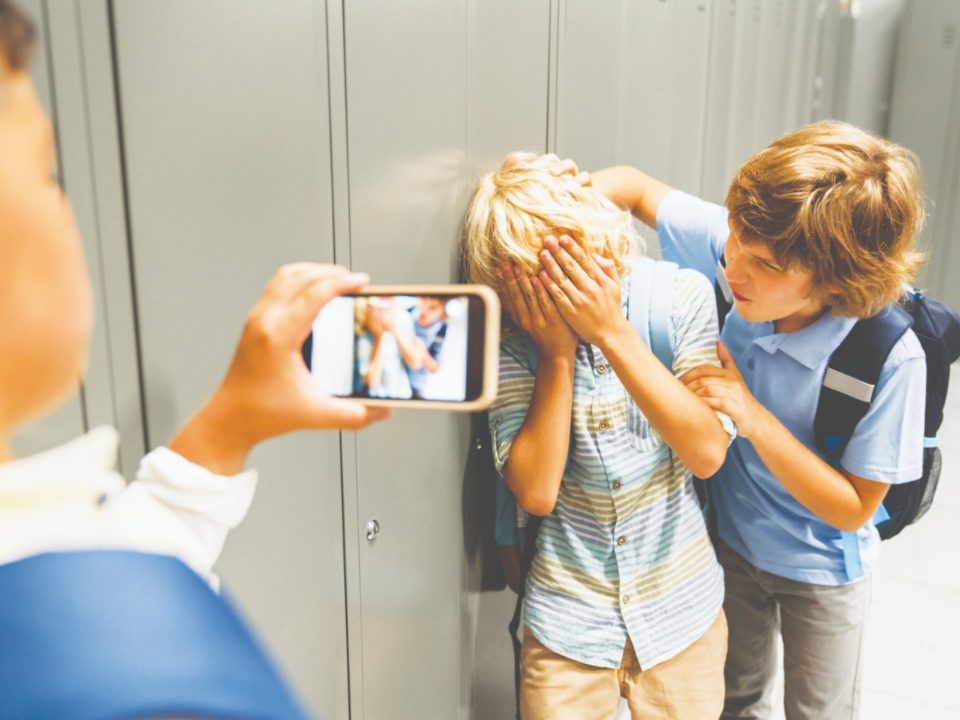
Bullying Prevention: What Are the Schools Doing?
When he was 13 years old, Traeh Thyssen was an eighth-grade student in the talented arts and gifted program. He played the violin and cello, and he had long, curly hair that he was growing out to donate when he turned 18. Despite his philanthropic heart, his hair was one of many things he experienced bullying over.
Dr. Rosalynn Thyssen, his mother and founder of the Have a Heart Foundation, shares, “[Traeh] did experience all forms of bullying, from verbal to physical to purposeful exclusion, where he was purposely excluded from activities, and cyberbullying as well.”
Hoping to put a stop to the bullying, Traeh reported the bullying to a teacher. Dr. Rosalynn also met with school administrators, where she was told that, “they will take care of it, they will look into it, and that he seemed ‘okay.’” Traeh committed suicide in October of 2019 due to the unresolved bullying.
Crimestoppers Safe Schools Louisiana–an app that allows students to anonymously submit tips in order to help keep themselves or others safe from threats, harmful behaviors, or dangerous situations–reports that bullying is the most submitted tip on the app.
Darlene Cusanza, President & CEO of Safe Schools Louisiana, explains, “Our number one tip has to do with bullying, whether it’s cyberbullying or bullying in person, and we’ve seen that continue, pretty much for several years, where that has been the highest level of reports. We’ve also seen an increase in reports about self-harm. So of the two, that’s the majority of the tips that have
come through.”
With the number of bullying reports reaching such high levels, what are our schools doing to help stop this from happening? How much can they intervene?
CULTURE IN THE CLASSROOM
At the root of it all, the culture of the school and in the classroom plays a huge role in protecting students and preventing bullying. According to Erin Bradford, Director of the I CARE program, “climate and culture in a classroom is important, so teachers
build a culture of respect in their classrooms.”
At the beginning of the school year, students–like teachers–are required to go through training. During this training, staff members “tell the students what bullying is, who a safe person can be, and how to report [bullying],” explains Bradford.
By providing students with these tools, they are more equipped to navigate through bullying situations, whether they are experiencing the bullying themselves or one of their friends.
TRAINING FOR TEACHERS
Teachers are sometimes the first line of defense in helping create a safe environment for their students. With the culture in the classroom being so important, teachers must know how to navigate through the obstacles as well.
Bradford explains, “Teachers are required to do training through Safe Schools/Vector Solutions around bullying.” This training will define bullying and discuss how to ensure each student, student’s parent or legal guardian, and school administrator is aware of their duties and responsibilities relative to preventing and stopping bullying.
Along with this, school administrators must provide a process for reporting and investigating bullying, provide an appropriate method of discipline for a student who is found guilty of bullying, and offer remedies for a student who has been bullied.
Most importantly, all school administrators, teachers, counselors, bus operators, and volunteers are to be made aware of these regulations in order to help prevent and stop bullying.
REPORTS OF BULLYING
Despite the training for administrators and students, bullying reports remain high, and many parents feel that there isn’t enough being done once the bullying has been reported. Oftentimes, the reporting process can vary by school or parish.
In East Baton Rouge Parish Schools, the first step requires the individual reporting the bullying to fill out a “bully reporting form” and give it to the principal. After the form is submitted, Bradford explains, “an investigation must be done within 10 days by the administration. At the conclusion of the investigation, the administration must contact the person reporting to give them the findings.”
The next step has both parties being referred to an I CARE Specialist at the school to be seen individually. “An intake is done and the specialist will continue to follow up with the students. Depending on the scope of need, the specialist can get other departments involved to help with interventions. If the bullying allegations were found to be true, the administration will give consequences according to the Students Rights and Responsibilities Handbook,” says Bradford.
With this protocol in place, Bradford shares that they have seen success, and they have been able to intervene and stop the bullying behavior.
WORK TO BE DONE
There is still work to be done in our schools to help prevent bullying. In order to better help protect our students and create safer environments, Dr. Rosalynn suggests that the training needs to be better, not just for building awareness but for how to handle bullying when it occurs.
She says, “It has to be handled very delicately because when it’s not, unfortunately, it gets worse. And when it gets worse, the kids who are being bullied, they feel worse. And then sometimes, we end up with situations like Traeh’s, where they’re no
longer here.”
Being more aware and taking the initiative to take things a step further is work that has to be done because we can’t lose any more lives, Dr. Rosalynn adds.
Cusanza agrees and shares that having an open conversation and discussing what bullying is and how you should respond if you’re the victim is important. She also notes that educating parents on the proper way to respond and the proper way to share information in a constructive way is especially crucial. “This happens a lot, so sharing what you’re seeing with the proper adults in authority is very important because then they have a trail to see the behavior that’s being demonstrated,” she says.
Unfortunately, bullying is happening everywhere, and a lot of the time, we aren’t even aware of it. Holding each other accountable, reporting what we see, extensive training, enforcing positive behavior among students, and practicing empathy can move us one step closer to preventing bullying in our schools.





